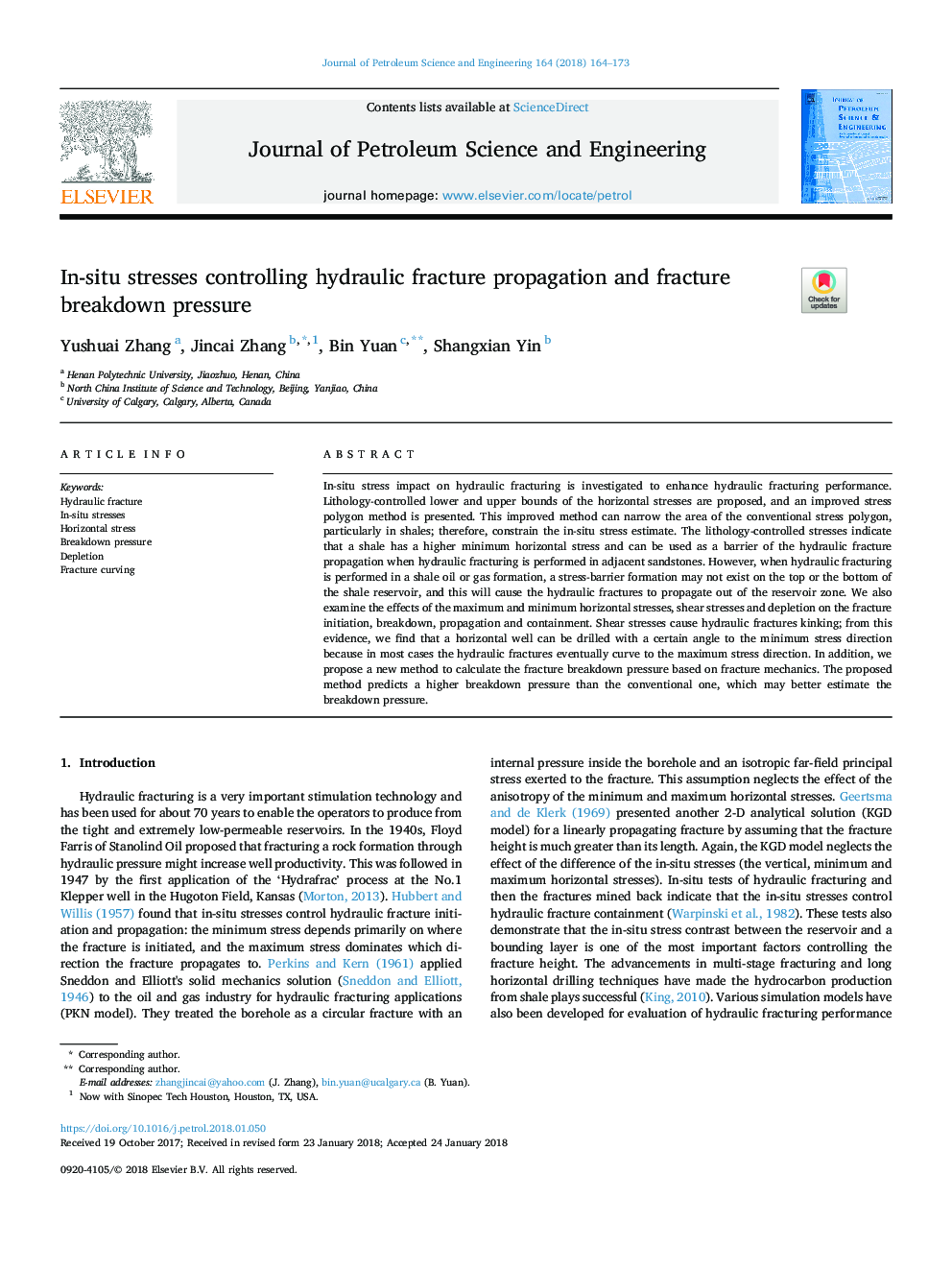| Article ID | Journal | Published Year | Pages | File Type |
|---|---|---|---|---|
| 8125296 | Journal of Petroleum Science and Engineering | 2018 | 10 Pages |
Abstract
In-situ stress impact on hydraulic fracturing is investigated to enhance hydraulic fracturing performance. Lithology-controlled lower and upper bounds of the horizontal stresses are proposed, and an improved stress polygon method is presented. This improved method can narrow the area of the conventional stress polygon, particularly in shales; therefore, constrain the in-situ stress estimate. The lithology-controlled stresses indicate that a shale has a higher minimum horizontal stress and can be used as a barrier of the hydraulic fracture propagation when hydraulic fracturing is performed in adjacent sandstones. However, when hydraulic fracturing is performed in a shale oil or gas formation, a stress-barrier formation may not exist on the top or the bottom of the shale reservoir, and this will cause the hydraulic fractures to propagate out of the reservoir zone. We also examine the effects of the maximum and minimum horizontal stresses, shear stresses and depletion on the fracture initiation, breakdown, propagation and containment. Shear stresses cause hydraulic fractures kinking; from this evidence, we find that a horizontal well can be drilled with a certain angle to the minimum stress direction because in most cases the hydraulic fractures eventually curve to the maximum stress direction. In addition, we propose a new method to calculate the fracture breakdown pressure based on fracture mechanics. The proposed method predicts a higher breakdown pressure than the conventional one, which may better estimate the breakdown pressure.
Related Topics
Physical Sciences and Engineering
Earth and Planetary Sciences
Economic Geology
Authors
Yushuai Zhang, Jincai Zhang, Bin Yuan, Shangxian Yin,
